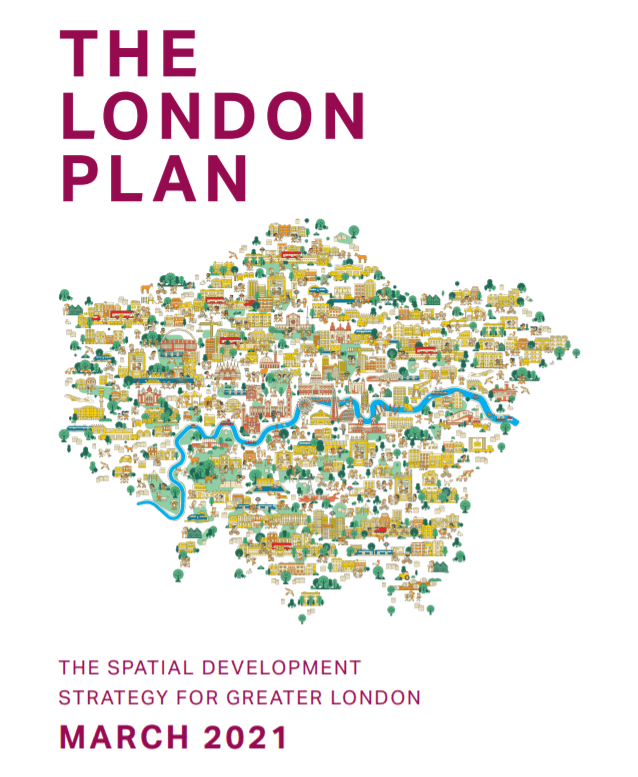January is the time for New Year’s resolutions and plans for how to become a healthier, fitter, kinder, more cultured, or more relaxed person – or whatever other goals and aspirations you might have! So it seems fitting that the Greater London Authority (GLA) is also beginning to develop their own plans on how to help London grow in a healthy, sustainable, inclusive, and better way through the ‘London Plan’.

The London Plan for Good Growth
The London Plan is a policy document, which outlines what the Greater London Authority (GLA) think is necessary or best practice to ensure the ‘good growth’ of London in the future – both the growth of London’s economy, and its physical growth, such as building and infrastructure projects. The London Plan is renewed every 5 years, but it takes a considerable amount of time to develop it. Even though the most recent London Plan was only released in 2021, the process of developing the next London Plan has already begun. To develop the plan, the GLA has asked Londoners and other stakeholders to suggest evidence that should be considered, to ensure that future policies reflect the needs of a diverse range of Londoners and stakeholders in the pursuit of ‘good growth’.
The current London Plan emphasizes the importance of sustainable travel and of inclusivity to ‘good growth’. This requires an increase in active travel (walking, wheeling, cycling, scooting, and/or public transport) in order to:
- Improve air quality
- Reduce carbon emissions
- Reduce congestion
- Make streets safer
- Improve public health and wellbeing
It also needs all new developments – from streets and buildings to services and businesses – to be equally accessible to the whole of London’s diverse population.
We think these themes are crucial to ‘good growth’ (how can growth be ‘good’ if it excludes a significant proportion of the population, or does not promote physical and mental health and wellbeing?), but we are sure that there is room for improvement in future plans.
Better Growth
Over the past couple of years, there have been various schemes to encourage and enable more people to walk, wheel, or cycle; but many have been highly controversial and have been criticized for being inaccessible and excluding or marginalizing different sections of the population – particularly Disabled people. We know that many Low Traffic Neighbourhood (LTNs) and StreetSpace schemes have created access barriers for some Disabled people, but we also know that this is not due to an inherent problem with LTNs and other active travel schemes, but how these particular schemes were implemented. A scheme which is poorly designed and poorly implemented can create major barriers for different Disabled communities.
Well-designed streets, buildings, and other public spaces and services which create space for and enable more people to walk, wheel, or cycle for more journeys should improve access to these streets and the amenities around them, including rather than excluding Disabled people. To achieve this, designers, planners, and local authorities need to approach those who have the specialist knowledge of local needs and accessibility: local residents, Disabled communities, and Disabled-person led organisations, as well as other minority or under-represented groups. There needs to be inclusive and accessible engagement and consultation from the start of any project to its final evaluation, to ensure that it meets the needs of the local community.
We ‘re sure that proactive, inclusive and accessible engagement and consultation is important. We’ve heard from many Disabled cyclists how a lack of knowledge or awareness has resulted in discriminatory infrastructure or policies. In our annual survey, inaccessible infrastructure, lack of funding, and the lack of official recognition of cycles as mobility aids are frequently cited as major barriers for Disabled cyclists. Transport for All’s Pave the Way report highlighted how a lack of communication and consultation made Street Space schemes into barriers for many Disabled people. However, we’d like to hear what you think.
- Do you think that inclusive and accessible engagement and consultation is important, and why? (we hope you do!)
- Do you have any examples of good or bad practice?
- What else do you think should be considered to ensure ‘good growth’ in London?
Leave us a comment – we’d love to hear what you think!
